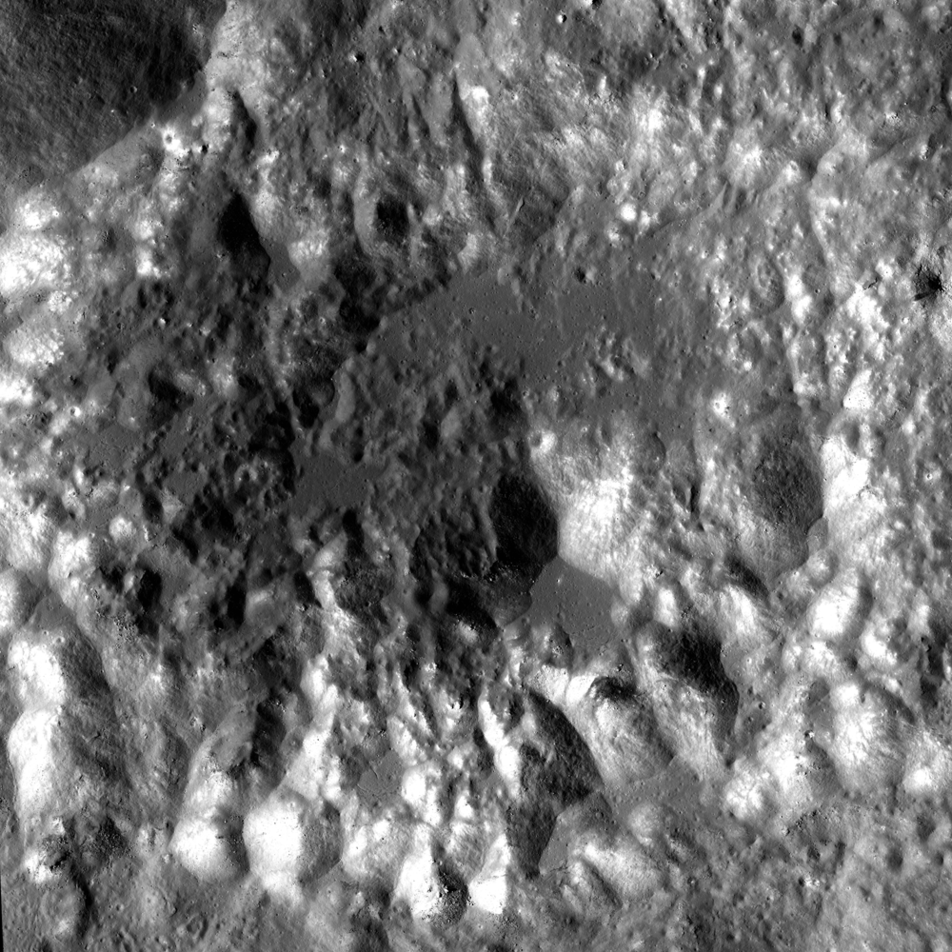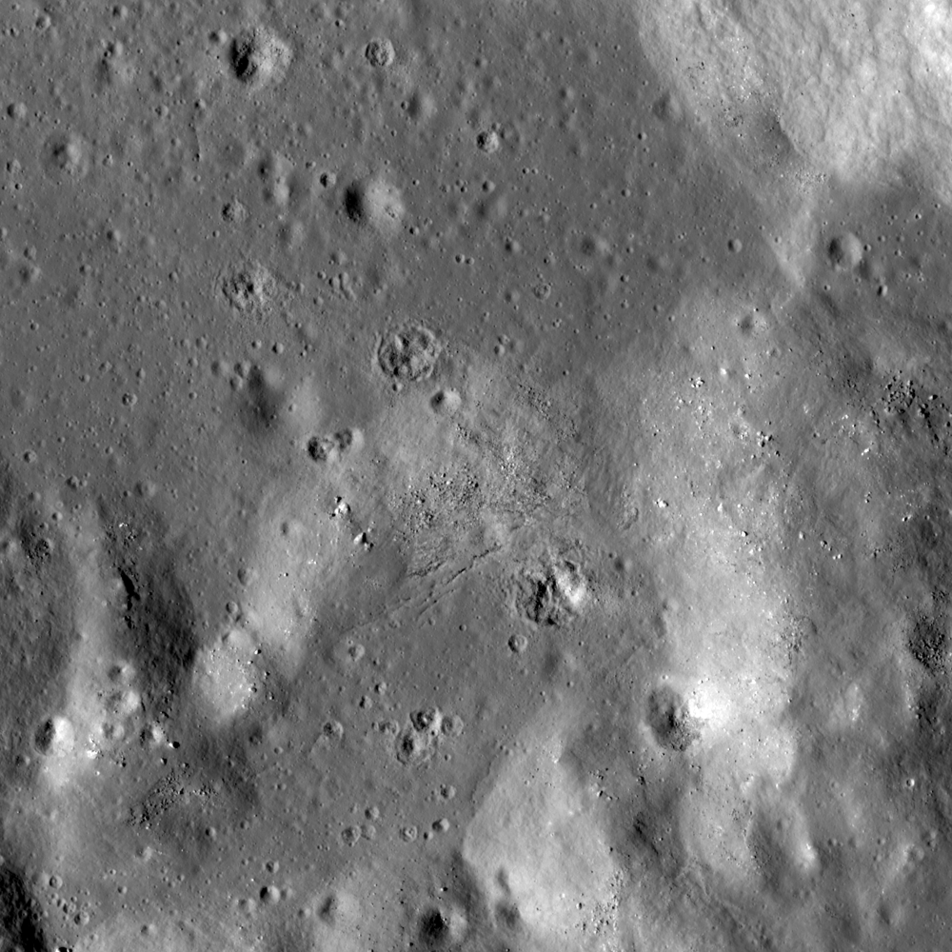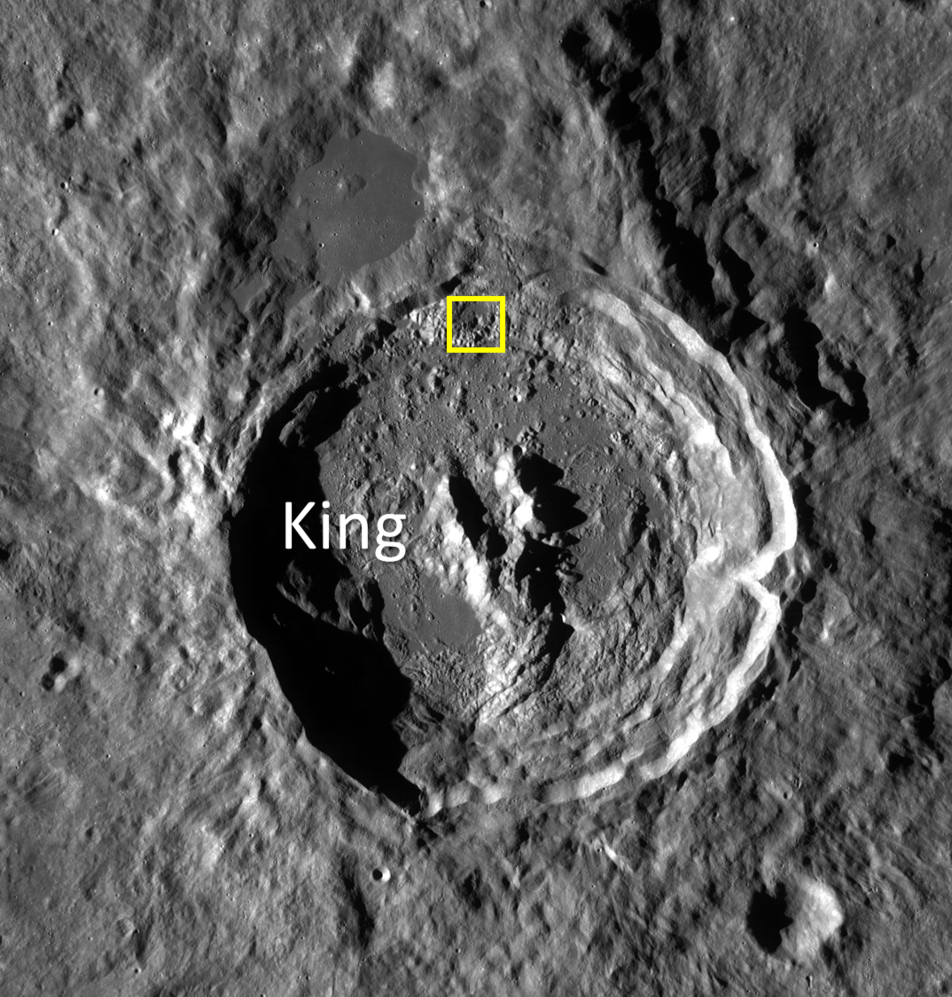
In the image above, impact melt pooled among the terraces in the walls of King Crater, a complex Copernican crater on the lunar farside. Impact melt is generated when kinetic energy associated with an impact is transferred to the target rock. Shock waves cause the rock to melt nearly instantaneously. The impact melt is flung all over the interior of the crater and some even makes it out of the crater. Melt splashed on the crater walls tends to drain back down pooling on ledges. This downward flow resulted in a coating of impact melt called a veneer, visible in this region, along with other features like fractures. Fractures in impact melt rocks can be the result of tectonic stresses and cooling and contracting of the impact melt. Sometimes craters also form before the impact melt has fully solidified, resulting in oddly shaped craters that resemble craters that form when pebbles are thrown into mud.

Aside from its rather peculiar central peak, King is rather unique in that the impact melt is not evenly distributed around crater, but rather accumulated in the north-northwest region outside the crater rim. This may be the result of an oblique impact. In the case of an oblique impact, impact melt is concentrated downrange of the incoming projectile.

Impact melt forms many exquisite features on the lunar surface such as flows, lobes, pits, fractures, channels, polygonal patterns, and more. Explore the impact melt features of this region in the full NAC mosaic below!
Related Posts:
Anomalous Mounds on the Floor of King Crater
King Crater's Unusual Melt Pond
Published by H. Meyer on 29 July 2014